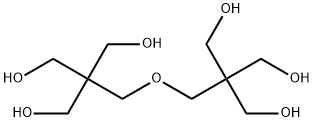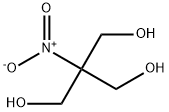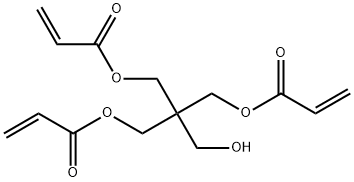Dipentaerythritol , 90% , 126-58-9
Synonym(s):
2.2′[Oxybis(methylen)]bis[hydroxymethyl)]-1,3-propandiol;Dipentaerythritol
CAS NO.:126-58-9
Empirical Formula: C10H22O7
Molecular Weight: 254.28
MDL number: MFCD00004691
EINECS: 204-794-1
| Pack Size | Price | Stock | Quantity |
| 100G | RMB23.20 | In Stock |
|
| 250G | RMB58.40 | In Stock |
|
| 500G | RMB104.00 | In Stock |
|
| 2.5KG | RMB438.40 | In Stock |
|
| others | Enquire |
PRODUCT Properties
| Melting point: | 215-218 °C (lit.) |
| Boiling point: | 356°C |
| Density | 1.36 g/cm3 (20℃) |
| bulk density | 400-450kg/m3 |
| vapor pressure | <0.00001 hPa (20 °C) |
| refractive index | 1.4455 (estimate) |
| storage temp. | Store below +30°C. |
| solubility | 2.4g/l |
| form | Crystalline Powder |
| pka | 13.38±0.10(Predicted) |
| color | White |
| PH | 5 (2g/l, H2O, 20℃) |
| Water Solubility | 0.29 g/100 mL (20 ºC) |
| Sensitive | Hygroscopic |
| InChIKey | TXBCBTDQIULDIA-UHFFFAOYSA-N |
| LogP | 1.8 at 23℃ |
| CAS DataBase Reference | 126-58-9(CAS DataBase Reference) |
| NIST Chemistry Reference | 1,3-Propanediol, 2,2'-[oxybis(methylene)]bis[2-(hydroxymethyl)-(126-58-9) |
| EPA Substance Registry System | Dipentaerythritol (126-58-9) |
Description and Uses
Dipentaerythritol, also known as 2,2-[oxybis(methylene)- bis[2-hydroxymethyl]-1,3-propanediol, is a byproduct of pentaerythritol production. Because of its low solubility in water (0.22 g/ 100 g H2O at 20 ℃ and 10.0 g/100 g H2O at 100 ℃) it can be separated from pentaerythritol by fractional crystallization. The yield can be increased by changing the ratio of formaldehyde/ acetaldehyde towards stoichiometric. Adding pentaerythritol before starting the reaction also increases the yield. An effective method is to use acrolein instead of acetaldehyde. Dipentaerythritol can be produced intentionally from pentaerythritol by acid catalysis. Dipentaerythritol is purified as a coproduct by many pentaerythritol producers.
2,2''-(Oxybis(methylene))bis(2-(hydroxymethyl)-propane-1,3-diol) is used in preparation of new type of explosion-proof and flame-retardant tape material for cables.
Safety
| Symbol(GHS) |  GHS07 |
| Signal word | Warning |
| Hazard statements | H315-H319-H335 |
| Precautionary statements | P261-P305+P351+P338 |
| Safety Statements | 24/25 |
| WGK Germany | 1 |
| Autoignition Temperature | 370 °C |
| TSCA | Yes |
| HS Code | 29094919 |
| Hazardous Substances Data | 126-58-9(Hazardous Substances Data) |
| Toxicity | LD50 orally in Rabbit: > 2000 mg/kg |




